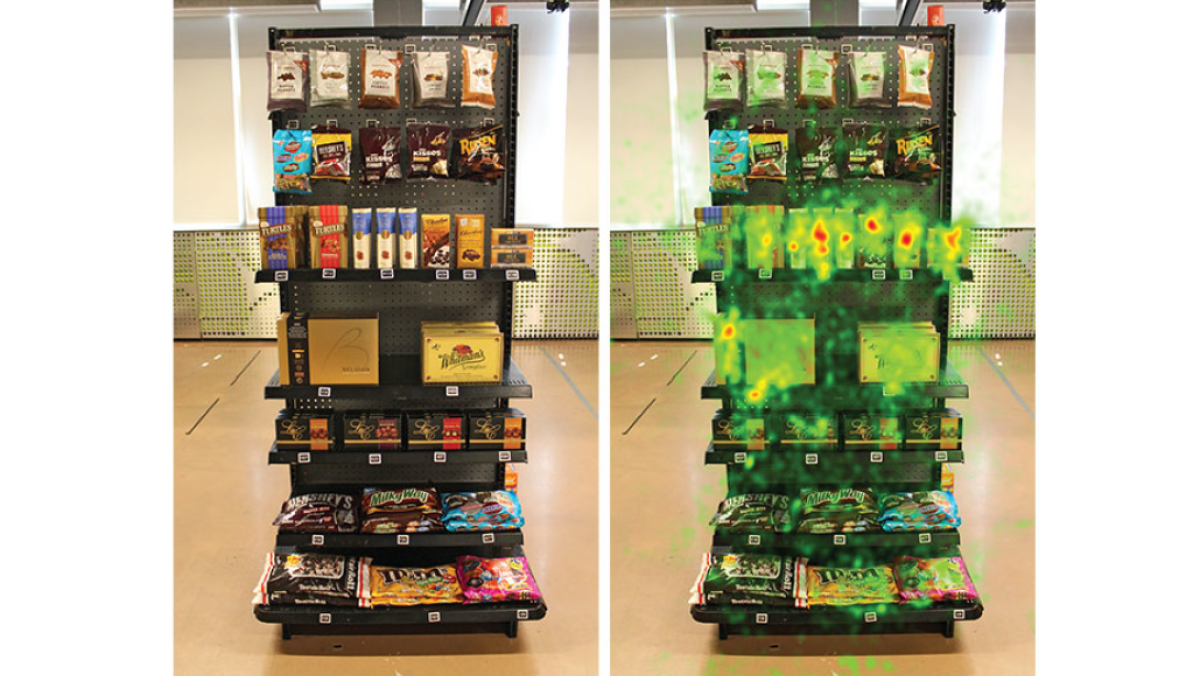The neuroscience of shelf appeal: How packaging drives purchase
In a world where consumers are bombarded by thousands of stimuli every day, the ability to capture attention and influence purchase decisions has become a critical challenge for businesses. Neuromarketing offers an innovative perspective to unravel the mechanisms that drive consumer choices at the unconscious level.
In this interview, Andrea Ciceri, neuromarketing expert and founder of SenseCatch, explains how neuroscience can help us understand the role of packaging in purchase decisions. We talk specifically about the fundamental role of packaging in purchasing decisions, how neuroscience can help us understand the emotions and cognitive processes that drive our choices, and how packaging design can significantly influence our purchasing behavior.

What role does packaging play in consumer purchase decisions?
Packaging plays a key role in branding and purchase decisions. Around 90% of consumers choose a product based on visible and immediate aspects such as appearance and shelf position. In addition, the choice is made in a very short time, between 8 and 15 seconds, so packaging design is crucial to grab attention and communicate effectively. We also know that, for the same price and brand, packaging that is more original, appealing, stands out on shelf and engages the consumer emotionally by communicating value is preferred. The packaging that is most liked is also the most chosen.
What are the key functions of an effective label?
A label needs to attract attention, represent the brand, tell the product story, stand out on shelf and aid decision making. This is particularly important in product categories where there is a high density of on-shelf references and where consumer knowledge is limited, such as beverages.
Why is it important to reduce perceived risk in the buying process?
Neuroscience shows that the brain only makes decisions in situations of certainty. When the perceived risk of making the wrong purchase is high, consumers tend not to make a decision. In the case of alcohol, for example, decision risk is high because it is often purchased for special occasions, gifts, celebrations or even for personal satisfaction, and a choice that does not meet expectations could affect consumer satisfaction.
What is the role of the designer in creating an effective label?
The designer must carefully dose and combine all design elements to create a label that best expresses the brand identity, communicates directly and converts attention into purchase. Every detail, from the choice of materials to the layout, affects the consumer's perception and experience, and therefore the product's positioning and repurchase.
What is the ultimate goal of good design?
Effective design is not only aesthetically pleasing but also functional. It has to communicate the desired message, touch the heart and mind of the consumer by making it easy to make a choice on the shelf in seconds.
What are the limitations of traditional research in understanding consumer behavior?
Most decisions (up to 95%) are emotionally driven and unconscious. This makes it difficult for consumers to consciously express the reasons behind their choices.
How important are details in design?
Details are crucial. Even small aspects, such as the finish of a material, can influence the perception of a product. The brain is very sensitive to subtle signals, which often make or break a product.

How does neuromarketing help to overcome these limitations?
Neuromarketing combines neuroscience, psychophysiology, economics and behavioral psychology to scientifically analyze the consumer experience using technologies such as electroencephalography (EEG) and eye-tracking.
How is neuromarketing used in market research?
Advanced tools are used to collect both cognitive and emotional data. For example, the eye tracker analyses the consumer's visual path on the shelf and on the packaging, while parameters derived from EEG technology measure their emotional responses. This makes it possible to understand not only the liking of a package but also the role of details, analyzing the entire decision-making process in a completely objective way, not mediated by the consumer's verbalization, which guarantees the reliability of the results.
What is SenseCatch's approach?
SenseCatch combines traditional methods with scientific neuromarketing techniques to comprehensively analyze consumer behavior. This integrated approach allows us to capture both the emotional and unconscious components of decisions, as well as opinions and expectations, providing a solid basis for guiding branding strategies.
About SenseCatch
SenseCatch offers innovative research and consultancy services to scientifically understand behaviors and decision-making processes, providing valuable insights to optimize marketing, communication, and sales strategies for brands.
The SenseCatch method combines various skills, methodologies, and research techniques to measure and interpret the emotional and unconscious factors underlying purchase decisions and experiences, such as visual attention, emotional engagement, implicit attitudes, and opinions.